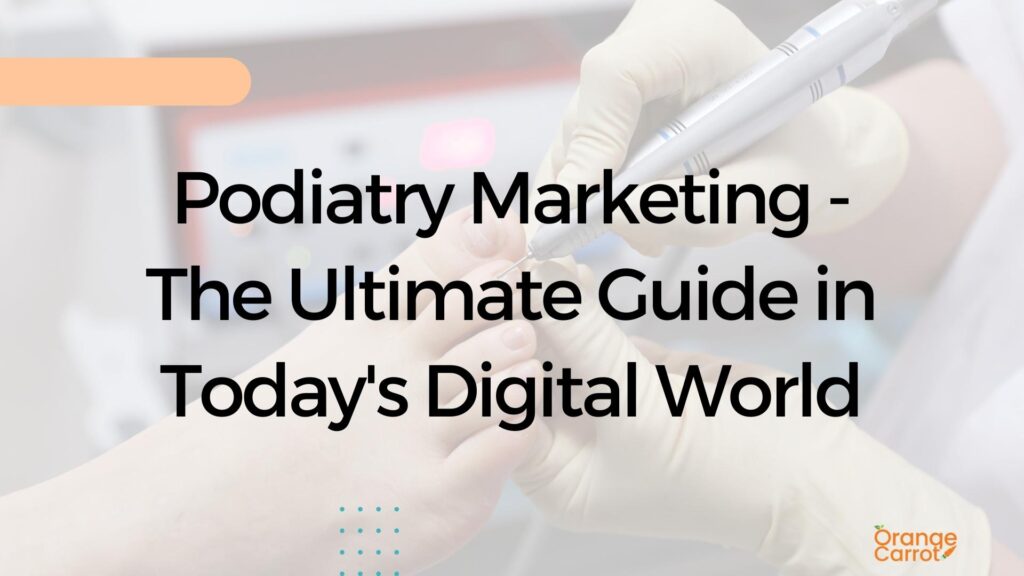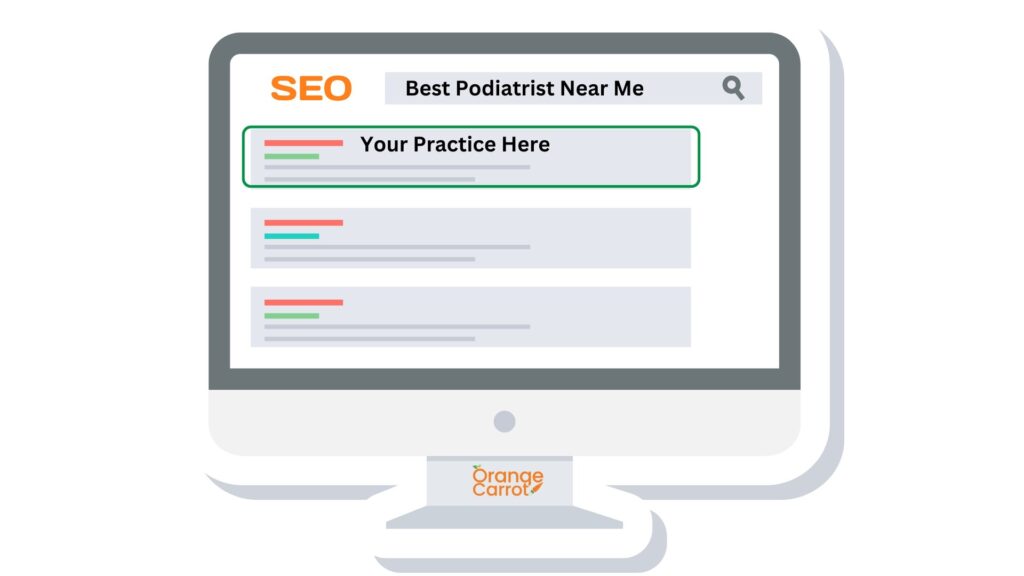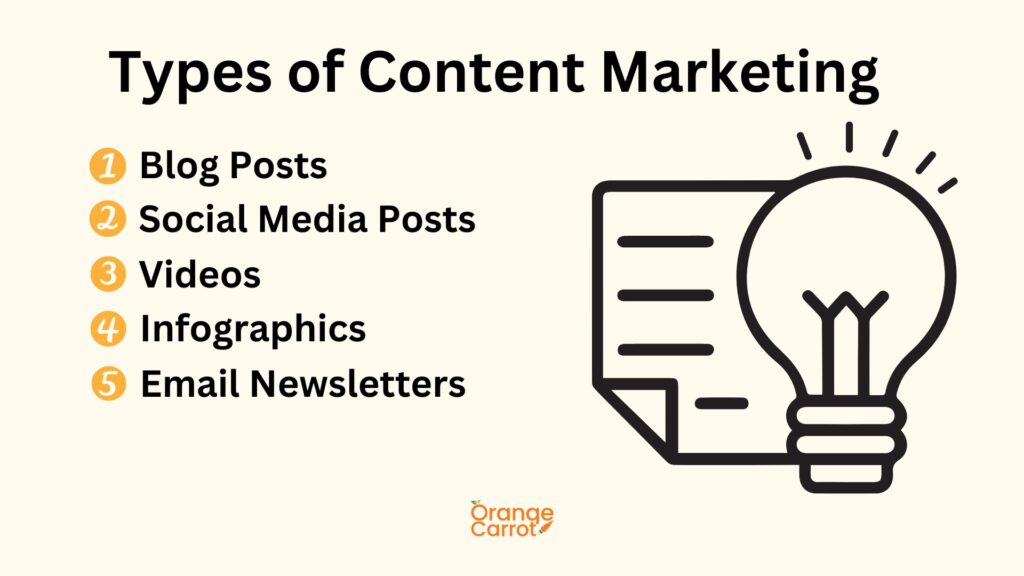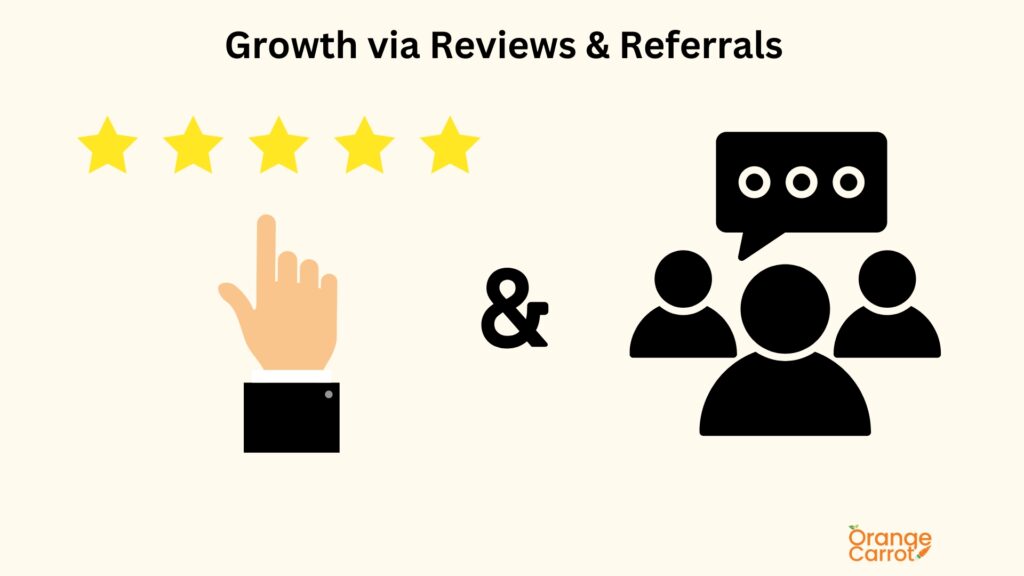
There has never been a more important time for podiatrists to focus on their online reputation and start branding themselves. With podiatry marketing, it is no longer about getting new patients into your office.
Many local areas now have too many podiatrists in one location. Now is the time for podiatrists to work on digital marketing along with traditional marketing efforts; to generate, monitor, and scale their podiatry practice.
In this blog, we will show you how to tap into the essential elements of digital marketing and expand your reach. We’re going to take the mystery out of internet marketing for podiatrists by explaining what it is, how it works, why it works, and how you can use it to make a real difference in your business online.
In simple terms, podiatry marketing is promoting your practice and getting new patients through various media channels. While this may sound simple, there is much more to it than just posting on your social media accounts and creating a website.
Podiatry marketing strategy includes tactics to promote practices and attract new customers. This can include everything from social media posts to targeted advertising to email campaigns. Still, these methods have one thing in common: they’re designed to make people aware of your business and encourage them to visit your practice.
The purpose of any business is to make money, but for this to happen, you need a steady stream of clients coming through your door. With the amount of competition today, this can be challenging if not impossible without proper marketing techniques in place.
If you want your business to grow and flourish, effective marketing strategies is essential.
Want to grow your podiatry practice? Book a free strategy call with us.

The patient journey is a framework that helps you understand the different stages of the patient’s life cycle. Understanding your patients’ journey can help you find opportunities to increase patient volume, your referrals and grow your podiatry practice.
Let’s walk you through the stages of the patient journey and how they apply to podiatry marketing:
Someone who has never heard of you or visited your website. This person is open to learning about new services and may be interested in new treatment options.
The Stranger phase occurs when people are unaware they need surgery or treatment. This phase is also known as “pre-awareness” or “pre-diagnosis.” An example would be someone who has never heard of bunions before and discovers them while researching foot pain online.
Someone who has had a positive experience with a friend or family member and may be open to talking with you about their care. These prospective patients are still in research mode, so make sure they can easily find information about your services online.
This could also be someone who has visited your website but hasn’t made an appointment yet. To convert these visitors into future patients, focus on providing helpful content that makes it easy for them to schedule an appointment on your website without leaving home (and in most cases without having to speak with a staff member).
The New Patient phase occurs when people come into your office for the first time and meet with you for the first time. This new patient can be either an existing patient or someone who has just visited a podiatrist website for the first time.
Engaging them during this phase is extremely important. They are most likely unaware of podiatry and its related health conditions, and how it benefits them. This is also one of the most important phases because it can lead to a long-lasting relationship with an new patient.
The loyal patient phase occurs when many patients say they have become comfortable with you, are happy with their care, and are referring others to your practice. This could be anything from three months to even several years down the road!
The last phase of the journey is the practice promoter phase, where most patients actively share their positive experience with others. to encourage them to make an appointment with your practice as well.
Want to grow your podiatry practice? Book a free strategy call with us.
Online or Digital marketing is any advertising that happens online. Any online promotion or through mobile devices such as smartphones or tablets is online marketing. It can include search engine optimization (SEO), pay-per-click ads (PPC) on search engines like Google or Bing, email marketing, and social media management, to name a few examples.
Offline marketing refers to any form of marketing that isn’t conducted online. This includes print media such as newspapers, magazines, flyers, posters and billboards. Other offline marketing channels include radio ads, direct mail campaigns, TV commercials, and even word-of-mouth referrals from satisfied patients. Flyers and brochures are usually handed out in public places like shopping malls or doctor’s offices.
One great thing about the digital marketing era is that you can market online in your way without having to spend lots & lots of money. But you should still put in effort on your offline marketing efforts.
Only when both are combined will you be able to experience 360-degree podiatrist marketing. That’s what this blog post aims to cover: how to properly blend offline and online methods & create a great synergy between the two.
Want to grow your podiatry practice? Book a free strategy call with us.

Having a strong online presence is crucial if you want to expand your podiatry practice and acquire more patients. So let’s dive deep as to how you can achieve this.
Your website is the first impression prospective patients will have of your practice. Your podiatry website must reflect the quality of patient care and expertise you provide, so it helps if you know how to optimize your site for search engine optimization (SEO). If you need help getting traction on Google, consider hiring an SEO expert to help you create a winning strategy that drives traffic to your site and increases conversions over time.
Your website should clearly display information about your practice and its, including:
Location
Hours of operation
Contact information: name of your business, address, phone number, email, social media links, etc
The number of doctors in the practice
Types of services you offer
Specialties (such as sports medicine or foot surgery etc.)
Insurance accepted (if applicable)
Other must-have elements on your website are:
Your credentials as a podiatrist: your educational background, experience and any additional certifications you may have received
A description of your practice: what services you provide, how long you’ve been in business, etc
A bio of the podiatrist or team members who work at the practice and a brief summary of what they do there (if applicable) and their areas of expertise
A list of any specific conditions or symptoms that patients can benefit from seeing a podiatrist for treatment
A regularly maintained blog with useful podiatry-related content for your readers

Search Engine Optimization and Local Search Marketing (Local SEO) are two of the most cost effective ways to market a podiatry practice, as they help you get found by patients who are searching for your services online.
Search engine optimization is one of the most important aspects of digital marketing. In fact, it’s so important that Google estimates that up to 90% of all clicks on search engine results pages go to the top 10 listings.
The goal of search engine optimization is to rank highly in Google’s organic search results for relevant keywords related to your clinic. The higher you rank, the more traffic you’ll receive from potential patients who are searching for podiatrists in their area.
As one of the largest sources of internet traffic today, Google has become essential for any business looking to expand its reach online. That’s why it’s so important that you invest time and effort into optimizing your website for search engines like Google.
Want to grow your podiatry practice? Book a free strategy call with us.

Local SEO is one of the fastest growing areas of digital marketing. And for good reason.
Local search marketing is the strategy of ranking your website and landing pages on the first page of Google’s local search results for keywords related to your services and location.
This is extremely important because it gives you a chance to rank above your competitors in the coveted top 3 spots on Google’s map listings.
These are called “map pack” listings, and usually appear at the top of a list of results.
When people conduct local searches on Google, they expect businesses near them to show up first in their search results. In fact, studies have shown that 70% of consumers start their research online before visiting a brick-and-mortar store or contacting an in-person executive.
This means that if your practice isn’t showing up in these critical spots, you could be losing out on potential clients who are ready to book appointments with you right now!
Check out a detailed and in-depth post about how to create and manage local listings and reviews.

Podiatry practices can see significant growth through the use of content marketing. By creating informative and engaging content, podiatry practices can establish themselves as thought leaders in the industry and draw in new patients.
One way to attract potential patients to your practice is by publishing educational, valuable content to users. This establishes you as an authority in your field and builds trust with your audience. Consider creating blog posts, videos, and infographics that provide helpful information about common foot problems like leg cramps, diabetic foot, ingrown toenails, growth plates in the bones etc, preventative measures, and treatment options.
When creating educational content, it’s important to keep your target patient experience and audience in mind. Consider the demographics and interests of your potential patients, and tailor your content accordingly. For example, if you treat a lot of athletes, you could create content that focuses on common foot injuries in sports and how to prevent them.
There are a variety of types of content that podiatrists can publish to educate patients. Here are some examples:
Blog Posts: This is part a of content marketing strategy. Podiatrists can write blog posts on a variety of topics related to foot and ankle health. These can include posts on common foot problems, preventative measures, and treatment options. Blogging also helps improve the SEO of the practice’s website, which can lead to increased visibility and patient traffic.
Social Media Posts: Podiatrists can use social media platforms like Facebook, Twitter, and Instagram to share tips, advice, and educational content related to foot health. They can also use social channels to promote their services and share patient success stories. If done right, social media makes for a useful community that knows you by your brand name eventually.
Videos Marketing: Podiatrists can create videos that showcase their services, explain common foot problems, and demonstrate exercises or stretches that patients can do at home to improve their foot health.
Infographics: Infographics are visually appealing and can be effective in explaining complex information in a simple way. Podiatrists can create infographics that explain foot anatomy, common foot problems, or the benefits of certain treatments.
E-newsletters: Podiatrists can send out e-newsletters to their patients and subscribers on a regular basis. These newsletters can include information on new services or treatments, patient testimonials, and educational content on foot health.
By creating a variety of content that is informative and engaging, podiatrists can establish themselves as thought leaders in the industry and attract new patients to their practice.
Want to grow your podiatry practice? Book a free strategy call with us.

Paid advertising is a powerful tool for podiatry clinics to raise awareness, introduce your clinic/practice especially in your local area. Paid ads are also a great means to attract new patients and increase your web presence. The most important types of paid advertising that podiatry clinics can use are:
When creating paid advertising campaigns, it’s important for a podiatrist to consider a few points to get the maximum benefit from the ads:
Overall, paid advertising benefits hugely to attract more new patients and increase online visibility. By leveraging the benefits of targeted advertising and tracking your results, you can create a successful campaign that drives growth and success for your practice.
Want to grow your podiatry practice? Book a free strategy call with us.

You’ve built a thriving practice, and you’re seeing more patients than ever. Now it’s time to take that success and use it to reach out to more potential patients and make your practice the go-to option for foot & ankle specialists in your area.
Start by focusing on making sure your podiatrist’ digital reputation is strong. This is the first step to gaining new patients through direct podiatry referrals, which are becoming an increasingly popular way for people to connect directly with the podiatrists they trust.
And we’re not just talking about reviews and Google rankings—you also need to make sure your website is optimized for mobile devices, that it’s easy for patients to book appointments online (or by phone), and that it has a robust digital referral system that allows patients to send their friends and family members directly from your website.
So how do you get started? Here are some of our best practices for building a strong digital reputation:
Establish a presence on the main social media platforms, Facebook, Twitter, Instagram and LinkedIn
Create a blog for your practice and make sure it’s relevant to your audience. Also make sure it’s optimized for search engines
Post regular updates on social media channels that are relevant to your target audience.
Respond to comments and questions in a timely manner
Set up an email newsletter so people can be alerted whenever you post new content on your website or social media channels.
With the advent of online reviews, it’s easier than ever for patients to find out about your practice — and for other healthcare providers/practices to find out about yours. But not all patient reviews are created equal. That means that you can’t afford to let your online reputation slip.
The best reviews come from happy, satisfied patients — and you can’t get those unless they are getting exceptional care and a positive experience overall. These patient reviews become a huge signal for search engines and new patients to consider your podiatry clinic for consultation.
According to a study by Oberlo, nearly 9 out of 10 consumers say that reviews help them in discovering a local businesses. Additionally, 62% of consumers say they will not buy from brands that censor online reviews (based on a study by Statista). This suggests that a majority of people take online reviews seriously in 2023.
So how do you close the deal on direct podiatry referrals with a strong online reputation?
Focus on convenience. If your practice is easy for patients to get to, they’re more likely to come back again and again.
Focus on the patient experience. Your patients will feel more confident in their choices if they know they’ve been treated well! If you make sure that they’re comfortable during their visit, they’ll be more likely to refer friends and family members who need similar treatment options!
Focus on podiatry patient retention and ongoing relationship management. The best way to keep people coming back is by treating them well—and then treating them even better next time around!
A satisfied patient is likely to get more referrals to your practice than any other prospect in the patient journey.
There are other powerful ways to gain referrals to your podiatry services. It can be via building strong relationships with the local doctors & healthcare providers. As mentioned above, your website is likely to get decent traffic from referral sources if it is optimized properly for Google & Bing.
Want to grow your podiatry practice? Book a free strategy call with us.

The final and the most important aspect of digital marketing strategies is to measure, monitor, and scale your marketing efforts. Establish key performance indicators (KPIs), such as website traffic, conversion rates, patient referrals, and social media engagement, to monitor your marketing success and make adjustments accordingly.
Tools like Google Analytics and social media analytics can provide real-time data to help you make data-driven decisions about your marketing strategies overall.
Once you’ve identified successful campaigns, it’s time to scale your efforts by increasing ad spend, expanding social media presence, or launching new campaigns. Continuously monitoring and measuring your results is essential to adjust your strategy as needed.
All the podiatrist marketing strategies you implement, and efforts you put in should ultimately help to convert & retain patients; and also to increase patient volume to the practice. The paid advertising and marketing strategies should align with providing exceptional service so that it makes the reputation management easy for the marketing team in the long-run.


An innovative digital business consultancy, helping brands leverage digital platforms by offering innovative integrated digital solutions.
#3.6, #3.7 91SpringBoard – Hitech Kondapur,
Hyderabad, Telangana – 500081
+91-9392507366
© Copyright 2024 Orange Carrot®, All Rights Reserved.